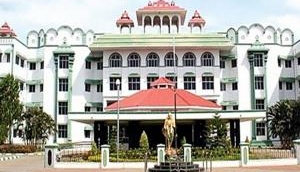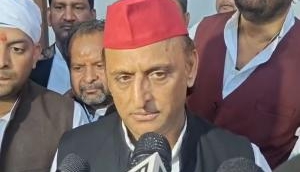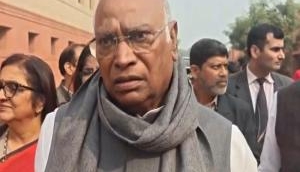
As the Parliament Monsoon Session started, the Opposition, including Congress moved the no-confidence motion against the Narendra Modi-led BJP government that was accepted by the Lok Sabha Speaker Sumitra Mahajan. The decision will be taken on Friday on the no-confidence motion against the government in Lok Sabha.
For the first time in four and a half years of Modi government, the Opposition has brought a no-confidence motion. The government has number than the majority of the figures, so she is confident that the proposal is not successful. However, in the history of the country so far, 26 per cent disbelief proposals have come, but the opposition has got success twice in the history.
What is 'No-Confidence Motion'?
Any government can need a majority of support in Lok Sabha to function. The party that is in power can remain in it when it shows its strength through a floor test which is primarily taken to know whether the executive enjoys the confidence of the legislature. If any house feels the party in power does not have a majority, then the house can move a no-confidence motion. If the motion is accepted by the Speaker, then the party in power has to prove its majority in the House. A government that faced a motion of no confidence:
The first no-confidence motion came against Nehru government
For the first time in the Indian Parliament, the no-confidence motion came in 1963 against the then Prime Minister Jawaharlal Nehru. JB Kriplani against Nehru had given a no-confidence motion. Due to not being re-elected as the president of the Congress, JB Kripalani left the party and started the Kisan Mazdoor Praja Party, which later became a Socialist Party with the Socialist Party, to become a People Socialist Party.
JB Kriplani, the then MP of the Praja Socialist Party, had 62 votes in favour of the non-confidence motion against the Nehru government and 347 votes in the opposition. In this way, these disbelief proposals fell silent.
The most frequent no-confidence motion against Indira
In the Indian parliamentary history, the Congress government, led by Prime Minister Indira Gandhi, faces the most disbelief proposal. Against Indira Gandhi, the opposition brought a no-confidence motion 15 times but did not get any success.
The record for presenting the highest confidence motion from the opposition is Jyoti Basu, a Marxist Communist Party MP. He kept his four proposals against the government of Indira Gandhi.
For the first time in the Parliamentary history of India, the opposition's motion of no confidence taste success in 1978 after Emergency. The Janata Party got a majority in the election after the Emergency and Morarji Desai became the Prime Minister. During the tenure of the Morarji Desai government, two non-confidence motion was brought against him.
Narasimha Rao had to face three times
Like Lal Bahadur Shastri, Narasimha Rao's government also had to face the motion of independence three times. In 1993 Narasimha Rao was able to overcome the non-confidence motion brought against his government at very low intervals. The government survived by the difference of 14 votes in the no-confidence motion vote against the Narasimha government. However, to save his government, he also accused the Jharkhand Mukti Morcha MP of indulging in temptation.
BJP's Atal-Government had fallen
Former Prime Minister Atal Bihari Vajpayee of the NDA government, the opposition, presented a no-confidence motion twice. When Vajpayee himself became the Prime Minister, he also had to face the no-confidence motion twice. For the first time, they could not save the government but for the second time, they defeated the opposition.
In 1999, the Atal Bihari Vajpayee government had to face a no-confidence motion from withdrawing Jayalalitha's party support. Then the Vajpayee Government lost by 1 vote. He had resigned even before division. After this, in 2003, the NDA had defeated the Opposition in the counting of votes for a non-confidence motion against Vajpayee. NDA got 312 votes, while the opposition was reduced to 186 votes.
Manmohan Singh- government survived by few votes
In 2008, CPM had brought a no-confidence motion against the UPA government led by Manmohan Singh. This proposal was brought out due to the nuclear deal with America. However, with the difference of some votes, the UPA government has escaped the fall. Now TDP has brought a no-confidence motion against the Modi government.
First published: 20 July 2018, 14:04 IST







![BJP's Kapil Mishra recreates Shankar Mahadevan’s ‘Breathless’ song to highlight Delhi pollution [WATCH] BJP's Kapil Mishra recreates Shankar Mahadevan’s ‘Breathless’ song to highlight Delhi pollution [WATCH]](https://images.catchnews.com/upload/2022/11/03/kapil-mishra_240884_300x172.png)

![Anupam Kher shares pictures of his toned body on 67th birthday [MUST SEE] Anupam Kher shares pictures of his toned body on 67th birthday [MUST SEE]](https://images.catchnews.com/upload/2022/03/07/Anupam_kher_231145_300x172.jpg)






